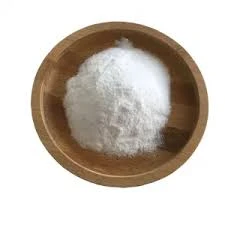Physical Treatment of Wastewater An Essential Step Toward Sustainable Water Management
The growing concerns surrounding water scarcity and pollution have necessitated the development of effective wastewater treatment technologies. Among these, physical treatment processes are crucial for the initial stages of wastewater treatment. This article aims to explore the various physical treatment methods for wastewater, their importance, and how they contribute to sustainable water management.
What is Physical Treatment?
Physical treatment refers to the methods employed to remove pollutants from wastewater without the use of chemical processes. These methods primarily involve the separation of solids from liquids through various mechanisms such as sedimentation, flotation, screening, and filtration. The aesthetic and functional quality of treated water is significantly enhanced, thus making it suitable for further treatment or direct reuse.
Methods of Physical Treatment
1. Screening This is the first step in the physical treatment process. Screening involves the use of screens or mesh to remove large debris such as sticks, leaves, and other large solids from the wastewater. By preventing larger particles from reaching subsequent stages of treatment, screening helps protect equipment and enhances the efficiency of downstream processes.
2. Sedimentation After screening, wastewater typically undergoes sedimentation, a process that allows solids to settle at the bottom due to gravity. This is achieved in sedimentation tanks, where the flow of water is decreased, allowing heavier particles (sludge) to settle out. The lighter components, such as oils and greases, can be removed from the surface, resulting in clearer effluent.
3. Flotation Flotation is a physical treatment method that involves the addition of air bubbles to the wastewater, which helps to lift suspended solids and oils to the surface. This process is particularly effective for removing fine particles that might otherwise remain suspended in the liquid. The froth created can then be skimmed off, yielding cleaner water.
physical treatment of waste water

4. Filtration Filtration involves passing wastewater through physical barriers or membranes to remove remaining suspended solids and particulate matter. Various filtration methods exist, including sand filters, gravel filters, and membrane filters. Filtration not only improves the quality of treated water but also prepares it for advanced treatment processes, such as biological or chemical treatments.
Importance of Physical Treatment
The implementation of physical treatment processes plays a crucial role in wastewater management for several reasons
- Prevention of Equipment Damage By removing large and heavy solids early in the treatment process, physical treatment protects pumps and other equipment from damage, reducing maintenance costs and enhancing operational efficiency.
- Reduction of Toxic Substances Physical treatment processes can eliminate harmful substances and pathogens, contributing to safer effluents. This is particularly vital when wastewater is reused for irrigation or recreational purposes.
- Facilitation of Subsequent Treatments The effectiveness of biological treatment processes often hinges on the quality of influent wastewater. By reducing the concentration of solids through physical treatment, facilities can optimize the performance of biological and chemical processes that follow.
Conclusion
The physical treatment of wastewater is an indispensable component of modern water management systems. It not only ensures the removal of solids and pollutants but also prepares the effluent for subsequent treatment stages, thereby enhancing the overall treatment process. As water scarcity becomes an increasingly pressing global issue, optimizing physical treatment methods can lead to improved water quality and sustainability. Emphasizing the importance of these processes is crucial for paving the way toward a future where water is conserved and reused efficiently, helping to protect this vital resource for generations to come. In summary, effective physical treatment processes represent a key step in the journey toward responsible and sustainable wastewater management.

